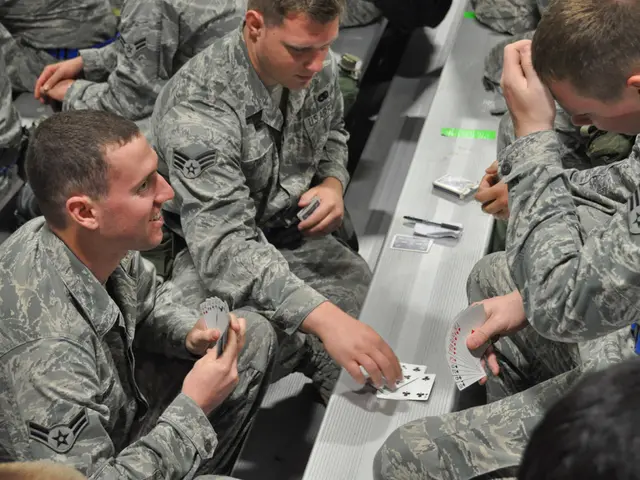Beating the Casino: MIT's Blackjack Team Employs Card Counting Strategy
The MIT Blackjack Team, a group of mathematically gifted students and graduates from prestigious universities, gained notoriety in the 1980s and 1990s for their successful application of card counting strategies in casinos.
The team's success can be traced back to Edward O. Thorp's work, particularly his book Beat the Dealer (1962), which introduced the concept of using card counting to gain a statistical edge in blackjack.
The team's card counting system involved extensive training for members to memorize and execute "basic strategy"—the mathematically optimal play for every hand. They also employed specialized roles within the team, with "spotters" tracking the count discreetly at tables and signaling to "big players" when the count was favorable. This meant the remaining deck had a higher concentration of high cards (10s, Aces), which advantage the player.
The "big players" would then join the game with large bets whenever the count indicated a player advantage, maximizing potential winnings. Their counting was based on keeping a running tally of low versus high cards dealt, allowing them to estimate when the deck was "rich" in high cards favorable to the player.
The team's sophistication extended beyond their counting system. They conducted systematic training and trust-building among members to ensure precision and discretion. Card counting only increases the player’s advantage by about 1%, but the team's coordination, bankroll management, and betting tactics allowed them to make substantial earnings, sometimes close to $100,000 per player at their peak.
The team's success inspired a movie, "21", and a best-selling book, "Bringing Down The House". However, as casinos became more adept at spotting card counters and shuffling decks more often, the team's operations eventually came to an end. They were caught and banned from casinos, leading to the dissolution of their company, Strategic Investments, in 1993.
In the "Hi-Lo" method, high cards (10, Jack, Queen, King, and Ace) count as -1, low cards (2, 3, 4, 5, and 6) count as +1, and the rest count as 0. The team set up Strategic Investments in 1992 with an initial investment of $1 million.
Notable members of the team included J.P. Massar ("Mr. M"), Bill Kaplan (a Harvard MBA graduate), John Chang, and Mike Aponte (a former team leader). The team grew to nearly 80 members, with groups in various states across the U.S. and internationally. At times, the team had up to 30 members playing simultaneously at casinos around the world.
Members of the MIT Blackjack Team, in addition to their casino-gambling endeavors, also maintained a blog documenting their experiences and strategies, providing insights into the world of casino-and-gambling, including detailed explanations of blackjack-related techniques such as the Hi-Lo method. The team's blog served as a means to heap knowledge about card counting strategies on their readers, keeping alive the legacy of the team known for their successful application of these strategies in casinos.




